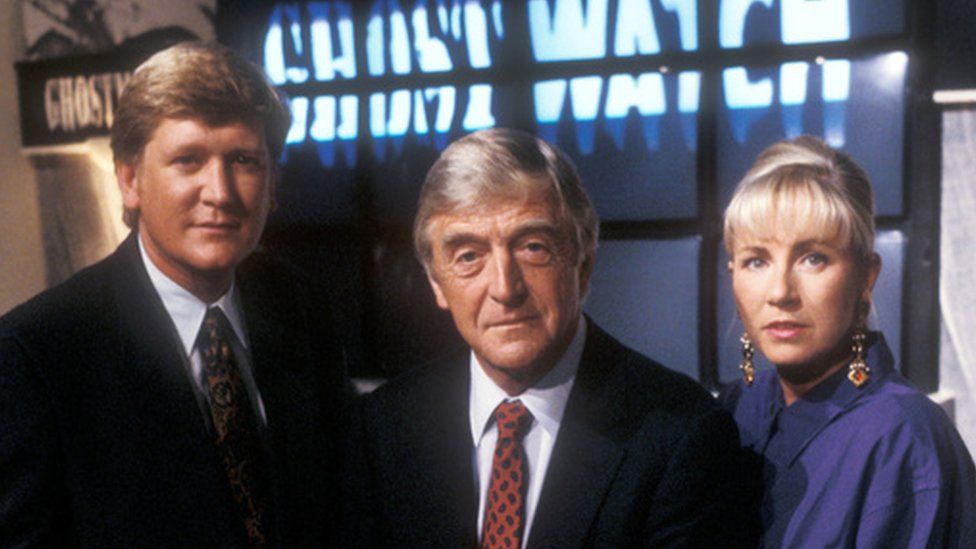Ghostwatch – TV’s scariest moment
If you’re searching for something novel and scary this year, why not try a TV broadcast that was so terrifying and controversial, it has never been repeated? Here’s the story of one of British TV’s most famous broadcasts, Ghostwatch.
Ghostwatch was a drama that aired on Halloween 1992, although it took great care to appear as live TV. Reporters Craig Charles and Sarah Greene investigate alleged poltergeist activity at a house in Greater London, while Michael Parkinson discusses the goings-on in a studio with Dr. Pascoe, a paranormal expert (actually an actress). Through footage and interviews with residents, the reporters discover a ghost the children called Pipes – we later learn that Pipes is the spirit of a psychologically disturbed man who believed himself to be troubled by the ghost of a notorious baby murderer.
Calls to the studio become more violent and related to the Pipes haunting, with viewers claiming to have seen him as poltergeist activity starts occurring throughout Britain. Dr. Pascoe realises that the programme has been acting as a conduit for Pipes – at the end of the show, it unleashes its full power. Greene is dragged away before Pipes takes control of the Ghostwatch studio. We’re left with a possessed Parkinson, wandering around the studio in the darkness and speaking in Pipes’ voice, before the show ended.
The show was incredibly careful in how it manipulated the audience, right down to its choice of presenters – Michael Parkinson and Sarah Greene, as trusted anchors, helped lend an authority to the show from the off. It took care to make the presence of Pipes a constant throughout – there are many sightings of him in the background of shots, there for fleeting glances and nothing more. Viewers couldn’t be certain that they had seen Pipes, and that uncertainty only added to their distress. Remember, this was 1992 – you couldn’t just pause or rewind the show, so those potential spots were all you had to go on.
Remember, this was 1992 – you couldn’t just pause or rewind the show, so those potential spots were all you had to go on.
This was played to the max with one of the first sightings. Watchers were convinced that they had seen a ghostly figure standing behind the curtains in the children’s bedroom – Parkinson and Pascoe watched the footage back and saw nothing. Two identical versions of the scene had been shot, with and without Pipes’ ghost – the sole intention was to play with the viewer, and make them question what they were seeing. If you couldn’t trust your own eyes in this show, how were you to know what was actually going on? That lack of certainty made it all the more terrifying.
Watching the show now, it’s hard not to see echoes of some of the many horrors that would come. Mentalist Derren Brown said the show influenced his 2004 Séance programme, and the blurring of reality and fiction would later come to epitomise the many found footage horrors that emerged throughout the 21st century.
If you’ve never heard of this broadcast, there’s probably a good reason why. Viewers were convinced that the show was real, and the BBC was besieged with phone calls and complaints – they recorded a message to say that the film wasn’t genuine during the broadcast, but the heavy traffic meant a lot of people got engaged tones, adding to the panic. It was heavily criticised in the press for the disturbing nature of a lot of the scenes, and it was directly connected to a suicide five days after it aired (a young man with learning difficulties had a faulty central heating system, causing his pipes to knock – he was convinced that there were ghosts about and killed himself). It has never been repeated in the UK since.
Although Ghostwatch is now widely known as a hoax, it is still an impressive and frightening watch, and a good one to try on Halloween. If you can find this classic, it’s well worth a watch – you’d struggle to find something this unique that still holds up, and will leave you with a chill in your bones.

Comments
Comments are closed here.